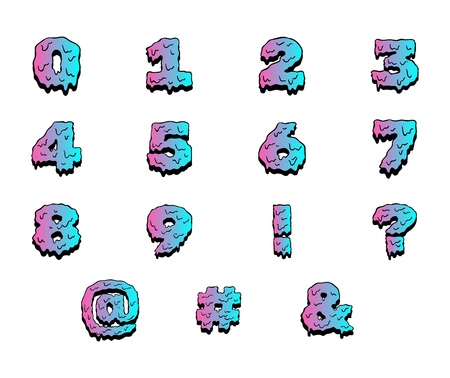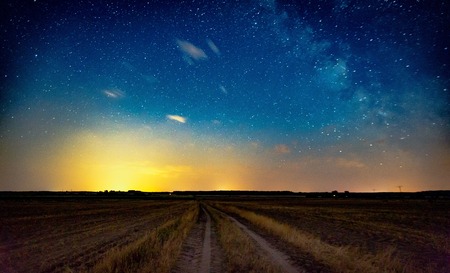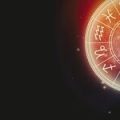Celestial Beliefs among the Ancient Britons and Druids
Long before the Roman conquest and the emergence of written records, the mist-laden landscapes of ancient Britain were home to complex societies whose relationship with the cosmos was both practical and deeply spiritual. Among these peoples, the Druids—revered as priests, philosophers, and keepers of arcane knowledge—stood at the heart of British spiritual life. They observed the heavens with a keen eye, interpreting the movement of celestial bodies not only as omens but as integral threads in the tapestry of their cosmology.
Druidic Observatories and Sacred Sites
The monumental stone circles scattered across Britain, most famously Stonehenge and Avebury, serve as silent testament to an advanced understanding of astronomical cycles. These sites, aligned with solar and lunar events such as solstices and equinoxes, suggest that the Druids possessed both a ritualistic reverence for the sky and a pragmatic need to track time for agricultural purposes. The interplay between earth and sky was celebrated through communal ceremonies marking seasonal transitions—a practice hinting at an embryonic form of astrology where cosmic order mirrored earthly affairs.
A Blend of Mythology and Proto-Astrology
For the ancient Britons, every star and planet was imbued with mythological significance. The movements of the sun, moon, and prominent constellations were woven into legends that explained natural phenomena, human destiny, and moral codes. This early astrological framework did not rely on individual horoscopes but rather on collective interpretations: auspicious days for sowing crops or embarking upon tribal gatherings were chosen based on celestial signs observed by Druidic sages.
The Spiritual Role of Celestial Observation
Astrology among pre-Roman Britons was inseparable from spiritual practice. The act of watching the skies was considered a sacred duty, reserved for those initiated into Druidic mysteries. Through ritual and oral tradition, knowledge of heavenly patterns was passed down generations, reinforcing social cohesion and providing guidance during periods of uncertainty. Thus, even in its nascent form, astrology helped shape not only religious doctrine but also the rhythms of daily life in ancient Britain.
2. Medieval Kings, Monks, and the Rise of Astrological Tradition
The medieval epoch in British history witnessed astrology flourishing at the intersection of royal authority, monastic inquiry, and the expanding intellectual currents of the age. Far from being consigned to the realm of superstition, astrology was woven into the very fabric of governance and scholarship. Monarchs sought celestial counsel for matters of statecraft, war, and succession. Notably, kings such as Henry II and Edward III consulted astrologers before embarking on military campaigns or making momentous political decisions. Astrology thus became an instrument of both legitimacy and strategy within royal courts.
Astrology and the Royal Courts
Within these courts, astrologers held esteemed positions, often enjoying patronage alongside alchemists and physicians. Their predictions shaped not only personal destinies but also national events, with birth charts cast for heirs and coronations timed according to auspicious planetary alignments. The table below illustrates the integration of astrology into key royal practices:
| Royal Practice | Astrological Application | Historical Example |
|---|---|---|
| Heir Birth Planning | Elections for favourable birth stars | Edward VI’s birth chart consultation |
| Military Campaigns | Choosing dates based on planetary omens | Henry II’s consultations before battles |
| Ceremonial Events | Coronation timing by astrological advice | Crowning of Richard II (1377) |
The Monastic and Scholastic Nexus
Beyond palatial walls, monasteries became crucibles for astrological learning. Monks meticulously copied Arabic treatises, integrating them with classical texts from Ptolemy and Galen. Astrology served as a bridge between faith and reason; it was neither wholly mystical nor entirely rational but resided in a liminal space that suited medieval sensibilities. Monastic scholars used astrology to refine calendars, predict eclipses, and explore the divine order underlying natural phenomena.
The Broader Intellectual Milieu
This era also saw the emergence of universities such as Oxford and Cambridge, where astrology was often incorporated into curricula under the quadrivium—arithmetics, geometry, music, and astronomy (within which astrology was subsumed). The scholastic method encouraged rigorous analysis, debate, and synthesis of astrological doctrine with theology and philosophy.
Astrology’s Enduring Legacy in Medieval Britain
The confluence of royal patronage, monastic diligence, and academic scrutiny ensured that astrology thrived in medieval Britain. It established a tradition that would weather later scepticism and reformations—a testament to its adaptability within evolving cultural landscapes.

3. Renaissance Enlightenment and the Astrologers Social Standing
The British Renaissance heralded a profound transformation in the perception and practice of astrology, as the intellectual tide of the era washed over England’s academic and cultural landscape. The period was marked by a renewed curiosity towards classical knowledge, yet it was also an age of scientific awakening that would forever alter the boundaries between science, magic, and popular belief.
Astrology’s Resurgence in Tudor England
During the sixteenth century, astrology regained a measure of respectability, finding its place among the learned pursuits of court and university alike. Figures such as John Dee—court astrologer to Elizabeth I, mathematician, and alchemist—embodied this curious blend of scholarly rigour and esoteric inquiry. Dee’s consultations for navigational purposes and his advice on auspicious dates for royal events exemplified astrology’s utility in statecraft, aligning celestial movements with terrestrial affairs.
The Shifting Interplay: Science Meets Magic
Yet even as astrology flourished within elite circles, it stood at the crossroads of profound intellectual tension. The burgeoning scientific method, championed by contemporaries like Francis Bacon, demanded empirical evidence and reproducibility, ideals that set it at odds with astrology’s mystical underpinnings. Nevertheless, many early scientists remained captivated by astrological principles; astronomy and astrology were still entwined disciplines, sharing tools and observational practices.
Astrologers and the Public Imagination
The social standing of astrologers during this period was paradoxical. On one hand, they were sought after by royalty and commoners alike for advice on everything from health to harvests. On the other hand, scepticism began to creep into public discourse as the Enlightenment gathered pace. Satirical pamphlets lampooned charlatan astrologers, and Parliament occasionally debated their legitimacy. Nonetheless, astrology retained a persistent allure within British society—its roots deepened by centuries of tradition yet shaken by the winds of reason.
This era thus represents a pivotal juncture in British history: a time when astrology straddled the worlds of science and superstition, its practitioners navigating shifting intellectual currents while maintaining their relevance in both high culture and everyday life.
4. Astrology and the Age of Empiricism
The dawning of the Age of Reason in Britain—spanning the late seventeenth to eighteenth centuries—heralded a seismic shift in intellectual culture. The empirical methodologies championed by figures such as Isaac Newton, Francis Bacon, and Robert Boyle ushered in a new era where evidence, repeatability, and rationality became the touchstones of knowledge. Astrology, long entwined with medicine, politics, and daily life, found itself scrutinised under this unforgiving analytical lens.
Astrological doctrines, once woven into the fabric of royal courts and universities, gradually lost their institutional legitimacy. Scientific revolutionaries posited that celestial phenomena were governed by predictable laws rather than occult influences or mystical correspondences. The Royal Society, established in 1660, became a bastion for experimental science and actively distanced itself from what it deemed “superstitious arts.” This shift is starkly illustrated in the changing status of astrology during this period:
Era |
Status of Astrology |
Mainstream Attitude |
|---|---|---|
| Pre-Empiricism (Tudor/Stuart) | Institutionalised; respected practice | Integrated into medicine & politics |
| Early Empiricism (Restoration) | Marginalised; associated with superstition | Sceptical & dismissive |
| Late Empiricism (Georgian) | Underground; popular almanacs survive | Tolerated as cultural relic |
Yet, while astrology’s public standing waned among the learned elite, it found fertile ground within popular culture and subaltern communities. Almanacs forecasting weather and fortunes remained widely read among rural Britons and urban tradesfolk alike. Secret societies and esoteric circles preserved astrological symbolism, reinterpreting it through lenses such as Freemasonry or Hermeticism. Thus, even as rational empiricism eclipsed astrology in official discourse, it inadvertently inspired vibrant underground currents—ensuring that the stars never wholly vanished from Britain’s cultural imagination.
5. Twentieth-Century Resurgence: Popular Culture, Publishing, and the Horoscope
The twentieth century witnessed a remarkable revival of astrology within the British cultural landscape, as celestial speculation migrated from private parlours into the bustling heart of public life. This resurgence was fuelled not by scholarly treatises but by the proliferation of mass media—newspapers, radio broadcasts, and eventually television—each medium acting as a new constellation through which astrological thought threaded its way back into everyday conversation.
The Newspaper Revolution and Astrological Columns
Perhaps the most significant catalyst for astrology’s return to mainstream Britain was the birth of the newspaper horoscope. In 1930, The Sunday Express commissioned R.H. Naylor to cast a horoscope for Princess Margaret’s birth, inadvertently launching a trend that would embed astrology in the very fabric of British popular culture. Soon, daily and weekly horoscopes became staple features across the press, offering a blend of entertainment and guidance that resonated with millions. The casual reader could now consult their stars over morning tea—a ritual which gradually blurred the lines between amusement and belief.
Radio Waves and Astrological Voices
As radio emerged as a household fixture, so too did astrologers find their voices amplified. The immediacy and intimacy of radio allowed astrologers to speak directly to listeners, weaving planetary patterns into the tapestry of modern anxieties and aspirations. These broadcasts transformed astrology from a marginal curiosity into a shared cultural experience, fostering familiarity even among sceptics.
Celebrities and the Cult of Personality
The latter half of the century saw astrology entwined with celebrity culture. Figures such as Russell Grant and Mystic Meg became household names, their pronouncements awaited almost as eagerly as those of political pundits or sporting heroes. Their charisma lent astrology a new glamour; suddenly, it was not only acceptable but fashionable to discuss star signs at dinner parties or in office corridors.
Horoscopes: From Entertainment to Social Lexicon
By embedding daily horoscopes in newspapers and magazines, astrology secured an enduring place in British social consciousness. Star signs became shorthand for personality traits—a gentle Leo, an analytical Virgo—facilitating playful banter and self-reflection alike. While scientific credibility remained contested, astrology’s cultural potency was undeniable; it became both mirror and map for navigating modern life’s uncertainties.
Thus, the twentieth century did not merely revive ancient practices; it reimagined them for a democratic age. Through print, broadcast, and popular personalities, astrology was woven anew into the warp and weft of British society—an ancient wisdom recast beneath the electric light of modernity.
6. Astrology in the Digital Age: Algorithms, Apps, and Online Communities
In twenty-first-century Britain, astrology has undergone a striking transformation, propelled by technological innovation and the rise of social media. The digital age has redefined both the practice and perception of astrology, moving it from the private sphere of personal consultation into the public domain of apps, online communities, and algorithm-driven horoscopes. This evolution is not merely a matter of convenience; it marks a profound shift in cultural dialogues and the collective imagination surrounding astrology.
The Algorithmic Revolution
The integration of algorithms and artificial intelligence has mechanised astrological calculations with an accuracy and speed previously unimaginable. British users now engage daily with smartphone applications that generate tailored readings based on precise birth data. These platforms democratise access to astrological insights, allowing anyone with an internet connection to explore their charts. However, this mechanisation also raises questions about authenticity, as traditional interpretative nuance can be lost amidst algorithmic uniformity.
Apps as Gateways to Tradition
Astrology apps popular in the UK—such as Co–Star or The Pattern—function as digital gateways to ancient wisdom. They blend classical symbolism with contemporary design, making complex concepts accessible to new generations. For many Britons, these tools serve as entry points into deeper study or communal engagement, blurring the boundary between solitary reflection and collective experience.
Social Media and Cultural Dialogue
Platforms like Twitter, Instagram, and TikTok have fostered vibrant astrological communities across Britain. Here, practitioners share memes, debate planetary influences, and dissect natal charts in real time. Social media amplifies diverse voices—professional astrologers, sceptics, and curious novices alike—creating a dynamic forum for cultural negotiation. In these spaces, astrology is recast not only as a tool for self-understanding but also as a means of forging connections amidst societal uncertainty.
New Trends and Societal Impact
The resurgence of astrology among younger Britons coincides with broader trends towards spirituality outside organised religion. In this context, technology acts as both amplifier and filter: while it broadens participation, it also shapes how astrology is perceived—sometimes trivialised as entertainment, sometimes embraced as a serious practice for navigating modern life’s complexities. Ultimately, the digital age has ensured that astrology remains embedded in British culture—not as a relic of the past but as a living tradition adapting to new modes of communication and community.


